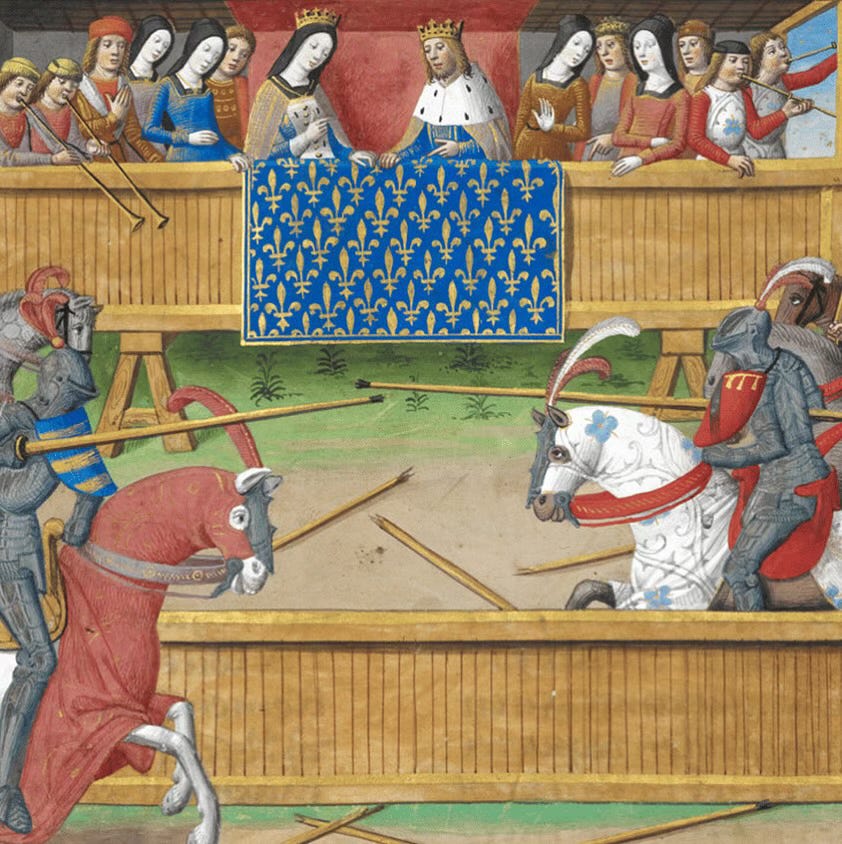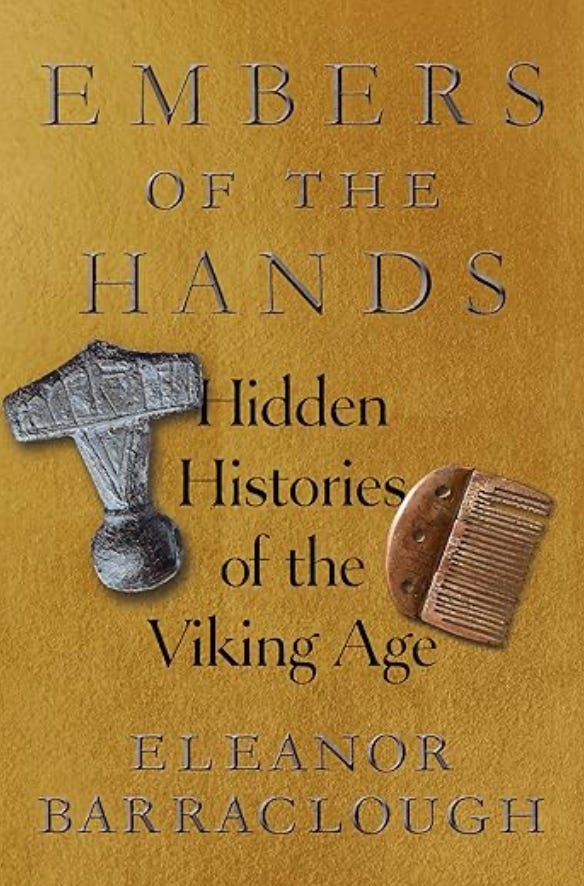Were Vikings literally larger than life?
On Viking heights | Outline Smarter, Not Harder | New Course on Chivalry
Welcome to the newsletter where history, storytelling, and inspiration meet. Every week, I share some of the fun historical research I’ve done while writing my novels, writing reflections (and sometimes tips), and sharing updates on my work and journey. If you were forwarded this message, you can join the weekly newsletter here.
Today’s Dispatch
Viking History: Were Vikings literally larger than life?
Writing and Publishing: Outline Smarter, Not Harder.
Author Update: New Course on Chivalry through Medievalists.net.
This week’s book recommendation.
Viking History
Were the Vikings Literally Larger than Life?
One of the best parts of writing about Viking history is when thoughtful readers and fellow writers jump into the fray with their perspectives. This week, I came across a fantastic essay by Richard at The Northvegr Journal titled “Vikings Weren’t Average — And Neither Were Their Axes.” In it, he explores the longstanding perception that Viking raiders were physically exceptional—taller, stronger, and more intimidating than their contemporaries—and makes the case that those who went raiding likely were elite warriors whose physical prowess stood out, both in their time and in cultural memory.
Richard and I are actually in broad agreement on a few key points: most archaeological evidence points to an average male height of around 5’7” to 5’9” for Viking Age Scandinavians—roughly in line with other Europeans of the era. Where we diverge is in the interpretation of what that means. In my article on Viking height (written over ten years ago now), I took a more skeptical view of written sources and emphasized the limits of the archaeological data. Richard leans into the symbolic power of memory and myth, arguing that the warriors who sailed abroad may have been exceptional, even if the average Viking Age Scandinavian at home was not.
It’s a great example of what I love about this kind of work: we can examine the same sources and come away with different takes, and have a respectful, intellectually stimulating conversation along the way.
Read Richard’s in-depth article below and subscribe to his Substack if you’re into Viking history:
Writing and Publishing
Outline Smarter, Not Harder
Whether you're a plotter, pantser, or somewhere in between, there's no escaping this truth: if your novel lacks structure, your reader will feel it—even if they can’t put their finger on why. One of the best tools I’ve used to clarify story structure is a worksheet I received from my editor that poses a specific set of questions every novelist should be able to answer.
Before you even start drafting—or especially before revisions—it helps to sit down and ask yourself:
What does my protagonist want, and what need is in conflict with that want?
What does their normal life look like before everything changes?
What single moment shatters that normal life and forces them into action?
What choice do they make early on that commits them to a path they can’t walk back from?
What twist hits them halfway through that changes the entire trajectory of the story?
Do they hit a low point near the end, and if so, what or who helps them rise again?
What truth have they learned by the final confrontation?
This isn’t just about “three acts” or “beats.” It’s about understanding narrative momentum: what drives the character forward and what forces them to grow. If you can't identify these elements, your story may not be fully formed yet—and that’s okay. Use the above questions to guide your narrative choices, and if you’d like to bounce ideas off of me or for me to send you the worksheet, shoot me an email.
Even discovery writers benefit from this kind of reflection, especially after the first draft. Great stories don’t just happen. They’re built.
Author Update
New Course: The Inception, Evolution, and Legacy of Chivalry
This week, I was invited to teach a course on Chivalry at Medievalists.net. Explore the origins, cultural evolution, and decline of Chivalry in medieval Europe by examining its historical context, legal codification, literary expression, and lasting legacy from the early warrior class to national militaries and modern ideals. The first session will be on September 16, and the course will run for 6 weeks. I can’t wait to share my other passion that often gets eclipsed by the Vikings: chivalry!
Book Recommendations
Embers of the Hands by Eleanor Barraclough.
Blurb:
In imagining a Viking, a certain image springs to mind: a barbaric warrior, leaping ashore from a longboat, and ready to terrorize the hapless local population of a northern European town. Yet while such characters define our imagination of the Viking Age today, they were in the minority.
Instead, in the time-stopping soils, water, and ice of the North, Eleanor Barraclough excavates a preserved lost world, one that reimagines a misunderstood society. By examining artifacts of the past―remnants of wooden gaming boards, elegant antler combs, doodles by imaginative children and bored teenagers, and runes that reveal hidden loves, furious curses, and drunken spouses summoned home from the pub―Barraclough illuminates life in the medieval Nordic world as not just a world of rampaging warriors, but as full of globally networked people with recognizable concerns.
This is the history of all the people―children, enslaved people, seers, artisans, travelers, writers―who inhabited the medieval Nordic world. Encompassing not just Norway, Denmark, and Sweden, but also Iceland, Greenland, the British Isles, Continental Europe, and Russia, this is a history of a Viking Age filled with real people of different ages, genders, and ethnicities, as told through the traces that they left behind.
“Embers of the hands” is a poetic kenning from the Viking Age that referred to gold. But no less precious are the embers that Barraclough blows back to life in this book―those of ordinary lives long past.






